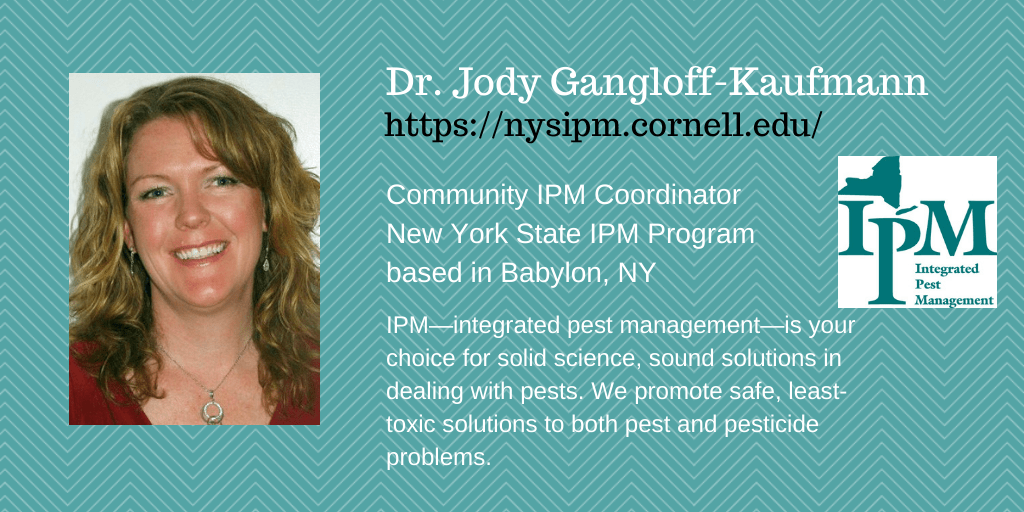Moths of all species, sizes and shapes are abundant during the warm months in the Northeast. They are attracted to lights. They get indoors. For the most part they don’t want to be there. But there are several species of moths that thrive indoors. While some of these will infest grains and pantry items, others feed on natural fibers like wool. The webbing clothes moth and the casemaking clothes moth are two types that will destroy wool rugs and clothes and will feed on animal-based fibers like fur, silk, feathers and leather. Museums and taxidermy mounts are notably at risk of damage. Even sweat-stained clothes aren’t safe.
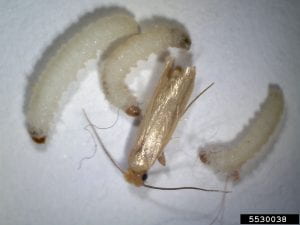

If you see tiny moths flying around your home, especially when you haven’t had the windows and doors open, you might be seeing one of these destructive pests. The key to control? First, know what you’re dealing with. Clothes moths (referring to both types) are ½ inch long, golden or mottled tan and brown in color and have fine fringes on the tips of their wings. Because they are easily confused with grain moths, it is also critical to find the source, which will be their larval food source.
In the case of grain moths, you’ll see adults flying near your pantry and cupboards and the larvae inside food packages. Clothing moths, however, prefer dark places like the back of a closet or under furniture on a wool rug. Adult moths do not feed. Their half inch long white caterpillars (larvae) do all the damage. A telltale sign of webbing clothes moth is the silky webbing spun by larvae on the surface of the material they are eating. The casemaking clothes moth larva creates a silken tube around its body that it drags around while feeding on materials. Larvae tend to hide within folds and creases in fabrics and along the edges of carpets. The result? Holes in fabric and damaged carpets, weak spots in leather and missing fur. But their foods are not limited to the things we own. A dead rodent or bird hidden in a wall or ceiling can provide nutrition for a full infestation of moths.
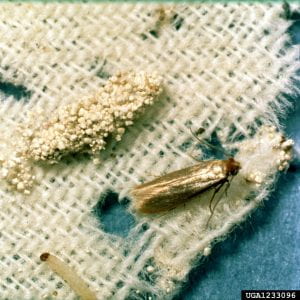
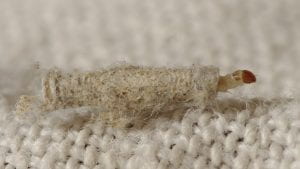
If it is unclear just where the moths are coming from, you might consider using pheromone traps labeled for clothing moths (available online). These combine sex pheromones with a sticky surface to catch flying moths. Place one in the far corner of each room where an infestation is suspected, including the basement and attic. Traps catching the most moths are usually closest to the food source. Too many pheromone traps can flood the space with pheromones that end up confusing moths, so less is more.
Once you have located the source of the infestation consider a plan focused on cleaning. Wool clothing, pillows, small rugs and the like can be dry cleaned or placed in a hot dryer for 30 minutes as a heat treatment (do not wash first). Many items can also be frozen to kill eggs and larvae. Large rugs can be cleaned with hot steam or you may have a pest management professional treat the rug with a low-risk product. For the long term, vacuum frequently paying attention to crevices and gaps that serve as hiding spots for larvae.
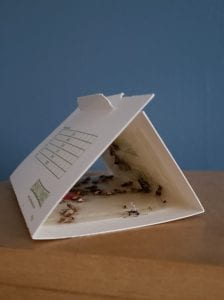

Once woolens have been treated, it is important to store them where moths cannot reach. Airtight containers, such as plastic bins or vacuum sealed bags, should be used for storage. Keep household humidity low to discourage pests and store vulnerable items, like furs, in cold storage during the warmer months. Rugs and fabrics made of synthetic materials are not at risk of damage.
If no obvious source can be found and a dead animal in the wall or ceiling is suspected, hire a professional to treat inside the wall and seal openings that allow moths to get into living space.
It is possible that the source of clothing moths will not easily be found, leaving residents frustrated. Pheromone traps can help by catching flying moths as they seek mates, thereby reducing the population until the source can be located.
Visit our website for general IPM for the home as well as specifics for fabric moths and pantry pests.
